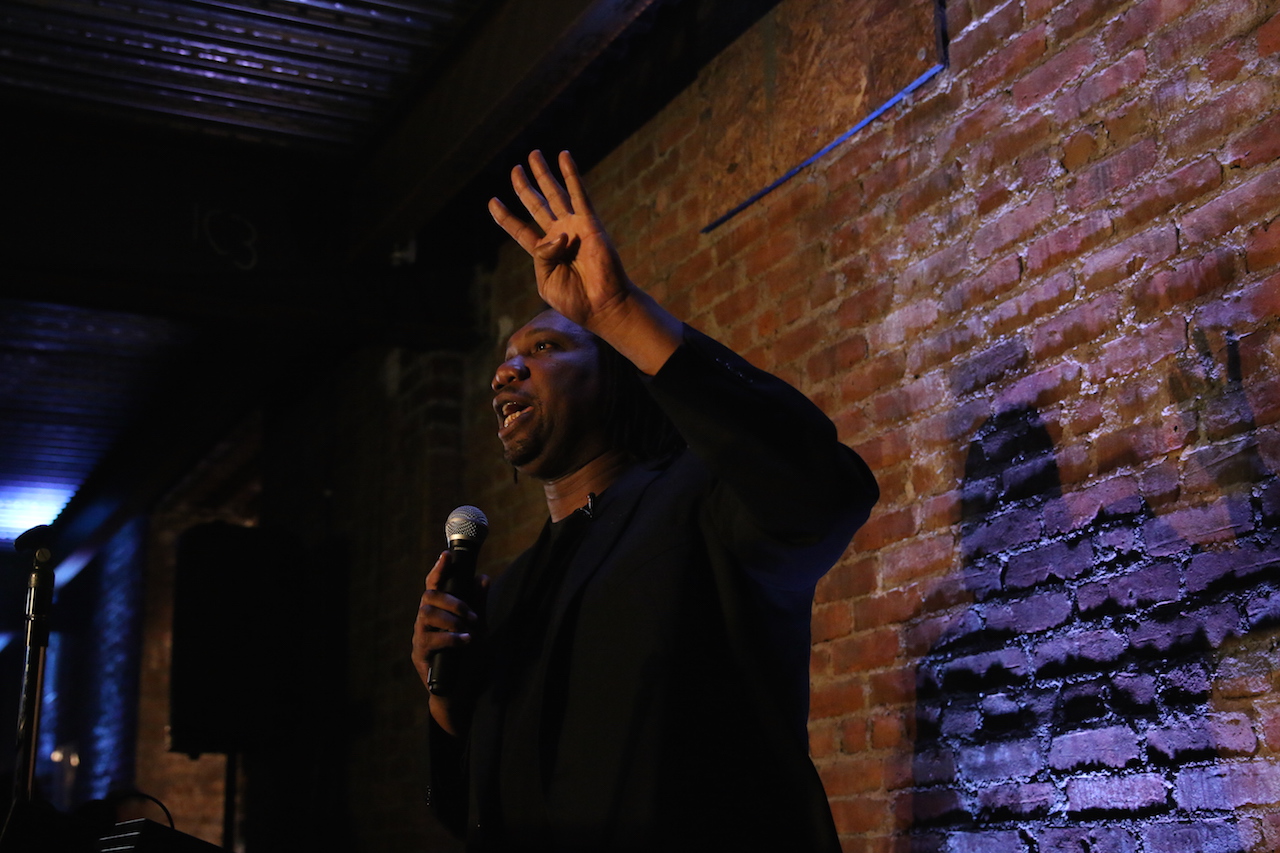
Genre icons visit Melrose to promote new app
Visitors to the Old Bronx Courthouse pressed cardboard goggles to their faces and drifted into a new space while experiencing mobile virtual reality, on an evening in October. The sneak peek was part of a Made in the Bronx Mixer at the former courthouse, where the highly anticipated Universal Hip-Hop Museum is scheduled to open in 2017.
A pop up art exhibit originally scheduled to launch in early November was postponed until next spring due to construction delays, but the virtual reality mobile application launches this week on Google Play.
Hip-hop pioneers and South Bronx natives Afrika Bambaataa, KRS One and Kurtis Blow collaborated to spearhead a plan to have the museum based in the area, as a way to celebrate the genre’s history on its home turf. The museum will receive city and state funding, as well as some financing from corporate sponsorships.
Google, Samsung, Microsoft, Red Bull and the Bronx Brewery are among the companies currently negotiating corporate sponsorships with the museum. The founders also hope to raise $500,000 through a crowd-funding campaign they will launch at a holiday party. The drive to raise money from the city and state is just starting, but the museum’s president, Rocky Bucano, said he is hoping to raise between $10 and 15 million.
Hip-hop historian and archivist Paradise Gray, who will serve as the museum’s curator, said the new space is “not a mausoleum, it’s not a place where hip-hop goes to die, but a place where hip-hop goes to live and to bridge the gap between generations.” Gray, who grew up and went to school blocks away from the courthouse, said he has collected hip-hop flyers, magazines and other related memorabilia since childhood.
The former street DJ and artist admitted that the music and the culture that spawned it saved him from life on the streets.
“Growing up, I always loved the names of the artists. They were like black super heroes: Grandmaster Flash, Afrika Bambaataa,” he said.
“Hip-hop, to me, is everything,” said Kurtis Blow, adding it is “more than just a fad, more than just music. It’s a race of people. It’s self-expression. It’s communication.” Blow’s virtual likeness appeared to viewers through the goggles.
Live lectures, B-Boy competitions, spoken word performances, turntablism exhibitions, hip-hop fashion, ciphers (rap battles), graffiti displays, documentary screenings and live performances are part of the museum’s blueprint.
“People should get the truth. The truth about our history,” said Blow. “I heard so many stories, so many versions. It’s finally time to let everyone who was involved in pioneering and birthing this culture get their props, and finally, they will live forever.”
“When I first walked in to [the old courthouse], I got chills just ’cause of the deep spirits that was in the place,” he added.
On its website, the museum advertises its mission is to “showcase, preserve, and protect Hip-hop Culture.” Robust support from prominent public figures like Ndaba Mandela, the son of former South African prime minister Nelson Mandela, as a member of its board of trustees, are a key part of the museum’s strategy, said Bucano.
“The museum seeks to be the conduit where all hip-hop lives,” said Bucano, who refers to himself as an interactive technologist and serial entrepreneur, while also serving as a manager for artists. Bronxites should see the new venture as a sign of progress for the neighborhood as well as a source for jobs, he said.
Bucano recently wrote on his personal Facebook account:
“As people of color we don’t control the ownership of our own history and culture. We don’t use our influence and power as a community to shape policy, or use our money to transform our own communities.”
“UHHM is something that we’re going to actually own,” he said. “Our mission is to empower the youth to learn how to be more creative, rise above the poverty, and make people in the Bronx more qualified for jobs.”
A training program in the new space will teach jobseekers skills such as coding, graphic design, music production and web and app development.
“Too often in the community we are the consumers rather than being the creators,” said Assemblyman Michael Blake, who has pushed for the museum. He added that the courthouse’s history as the site where the Bronx officially became a borough in 1914 is symbolic of its economic resurgence.
South Bronx Overall Economic Development (SoBRO) sponsored the evening event, which included other community initiatives the group is backing, along with the Mixer, such as the United Business Cooperative (UBC) and the introduction of its Bronx Salad.
For updates regarding the museum, Click Here.


“A training program in the new space will teach jobseekers skills such as coding, graphic design, music production and web and app development.”
To me – this is the most important aspect. I was hoping the whole building would feature that – but this sounds good.
I was wondering what would make Google and Samsung get involved in this project – and that’s the answer. That’s the real change that the community needs!
I wonder if a Salsa museum will appear. Even a Bronx Jewish museum since they did dominate in that area for decades. All in all – as long as the building is put to productive use.